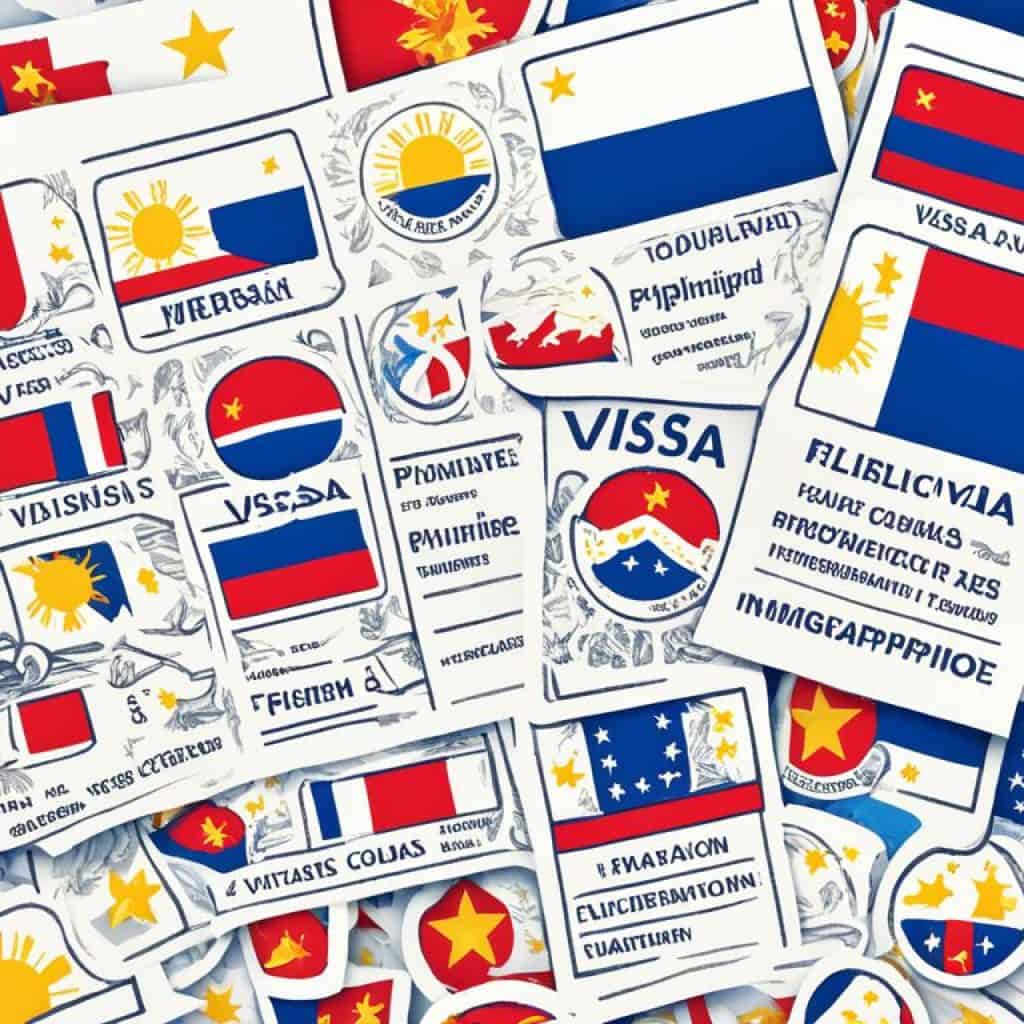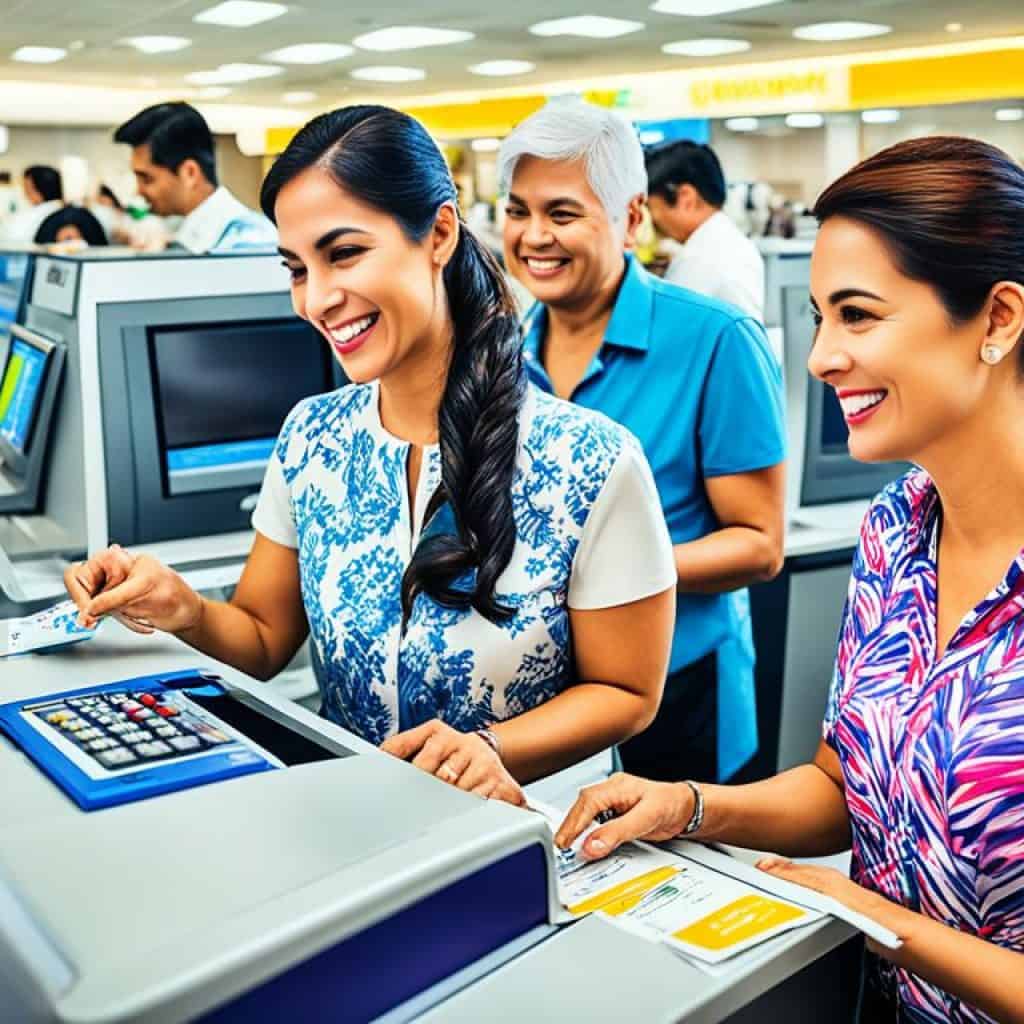Have you ever dreamed of packing your bags and starting a new life in a tropical paradise? The Philippines has long captivated the imaginations of adventurers, retirees, and digital nomads alike. But is relocating to this Southeast Asian gem really as idyllic as it seems?
From pristine beaches to vibrant cities, the Philippines offers a wealth of opportunities and experiences for those looking for a change of scenery. But before you take the plunge and set sail for this archipelago nation, it’s important to understand the practical aspects of moving to the Philippines as an expat. What are the visa requirements? How much does it cost to live there? Is the healthcare system up to par? And what about the education options for your children?
In this ultimate guide, we will unravel the mysteries of moving to the Philippines and provide you with all the essential information you need to make an informed decision. So, whether you’re considering a retirement in paradise or seeking new career prospects, join us as we explore the ins and outs of life in the Philippines. Are you ready to embark on this exciting journey?
Key Takeaways:
- Discover the essential facts about the Philippines, including its culture, language, and government type.
- Explore the various visa options available for US citizens relocating to the Philippines.
- Learn about the cost of living in the Philippines compared to the US.
- Understand the logistics and costs involved in moving to the Philippines.
- Get insights into finding accommodation, healthcare, education, and transportation in the Philippines.
Essential Facts About the Philippines
Are you considering a move to the Philippines? Before you embark on this exciting journey, it’s essential to familiarize yourself with some key facts about this beautiful country. From its vibrant capital to its unique culture, here are some important things to know:
1. Capital City: Manila
2. Languages
3. Population
The Philippines is home to over 110 million people, making it one of the most populous countries in the world. The local population is known for its friendly nature and hospitality towards foreigners.
4. Currency
The currency in the Philippines is the Philippine Peso (PHP). It’s advisable to familiarize yourself with the current exchange rates and banking facilities available to manage your finances effectively.
5. Government Type
The Philippines is a democratic republic with a presidential system. The government works to ensure stability and promote economic growth, creating a favorable environment for expats to live and work in.
6. Religion
The majority of the Filipino population is Roman Catholic, with Catholicism deeply ingrained in the culture and traditions of the country. There is also a significant Muslim minority and other religious groups present.
Living in the Philippines: Common Questions Answered
- Is it safe to live in the Philippines?
- What is the cost of living in the Philippines compared to the United States?
- What are the healthcare and education systems like in the Philippines?
- How can I navigate the immigration process and obtain a visa?
Living in the Philippines is an enriching experience that offers a unique blend of culture, natural beauty, and warm hospitality. As an expat, you’ll have the opportunity to immerse yourself in a vibrant community while enjoying a lower cost of living compared to the United States.
When considering a move, it’s important to be aware of the Philippines’ visa requirements for US citizens. The country offers various visa options, including tourist visas, work visas, retirement visas, and spouse visas. Each visa category has specific eligibility criteria and application processes, ensuring that you find the right fit for your circumstances.
The Philippines has a relatively straightforward immigration process, but it’s always wise to consult with the official government agencies or a reputable immigration lawyer to ensure you have all the necessary documentation and meet the requirements.
As you embark on this new chapter of your life in the Philippines, remember to embrace the vibrant culture, immerse yourself in the breathtaking natural landscapes, and make lasting connections with the friendly locals.
Immigration and Visas in the Philippines
Work Visas
For those planning to work in the Philippines, a work visa is required. The primary work visa is the 9(g) Pre-arranged Employment Visa, which is issued to foreign nationals with a job offer from a Philippine company. To qualify, you’ll need to provide certain documents, such as a valid passport, employment contract, and proof of qualifications.
It’s important to note that work visas in the Philippines are employer-specific, meaning you can only work for the company that sponsors your visa. If you change jobs, you’ll need to apply for a new work visa.
Retirement Visas
If you’re planning to retire in the Philippines, you can apply for a Special Resident Retiree’s Visa (SRRV). This visa is granted to foreign nationals who meet certain age and financial requirements. The SRRV allows retirees to live in the Philippines indefinitely and enjoy various benefits, such as multiple-entry privileges and exemption from certain taxes.
To qualify for the SRRV, you’ll need to be at least 35 years old and deposit a specific amount in a Philippine bank or purchase a property in the country. The exact requirements may vary, so it’s recommended to reach out to the Philippine Retirement Authority for the most up-to-date information.
Spouse Visas
It’s important to note that the immigration process and requirements can change, so it’s advisable to consult the official website of the Philippine Bureau of Immigration for the most accurate and up-to-date information.
Visa Options in the Philippines
To summarize the visa options available for US citizens moving to the Philippines, refer to the table below:
| Type of Visa | Requirements | Validity |
|---|---|---|
| Work Visa (9(g) Pre-arranged Employment Visa) | Job offer from a Philippine company, valid passport, employment contract, proof of qualifications | Depends on the employment contract |
| Retirement Visa (Special Resident Retiree’s Visa) | Age requirement, financial deposit in a Philippine bank or property ownership | Indefinite |
| Spouse Visa (13A Permanent Resident Visa) | Marriage to a Filipino citizen, proof of marriage | Indefinite |
Understanding the Philippines’ visa requirements is crucial when planning your move. Whether you’re seeking employment opportunities, planning for retirement, or joining your spouse in the country, knowing the visa options available to you will help make your transition smoother.

Cost of Living in the Philippines
When considering a move to the Philippines, one of the key factors to take into account is the cost of living. Compared to living in the United States, the cost of living in the Philippines is significantly lower, making it an attractive destination for expats seeking affordability without compromising on quality of life.
Here are some examples of average prices for everyday expenses in the Philippines:
Meals
- Average cost of a basic meal at a local restaurant: $2-$5
- Average cost of a three-course meal for two at a mid-range restaurant: $15-$25
- Price of a regular cappuccino: $1.50-$2.50
Utilities
- Monthly electricity, heating, cooling, water, and garbage bill for a small apartment: $50-$100
- Monthly internet bill: $25-$50
Transportation
- One-way ticket on local transport: $0.20-$0.50
- Monthly pass for public transportation: $15-$30
- Price of a liter of gasoline: $1-$1.20
In addition to these expenses, it’s important to consider the overall cost of healthcare, education, and leisure activities in the Philippines. While the cost of living is generally lower, it’s recommended to budget for these additional expenses to ensure a comfortable lifestyle.
Overall, the cost of living in the Philippines provides an opportunity for expats to enjoy a good quality of life at a significantly lower cost compared to the United States. These savings can be utilized for travel, exploring the country’s natural beauty, and immersing oneself in the vibrant local culture.
When it comes to managing your finances in the Philippines, the Wise Account offers a convenient and low-cost money management solution. With low fees and the ability to hold and exchange multiple currencies, the Wise Account ensures that your money goes further, allowing you to make the most of your new life in the Philippines.
Moving Costs to the Philippines
Planning a move to the Philippines involves careful consideration of various costs. From shipping your belongings to booking flights for your family, it’s essential to budget and prepare accordingly. Here’s a breakdown of the key expenses to keep in mind:
Shipping Costs
When it comes to transporting your furniture and belongings to the Philippines, you have several options to consider. The cost will depend on factors such as the size and weight of your items, the shipping method, and the origin of the shipment. On average, shipping costs can range from $2,000 to $5,000 for a full container load (FCL) shipment from the United States to the Philippines.
Flights for the Family
Bringing your family along to the Philippines will likely require booking multiple flights. The cost of airfare can vary depending on the number of family members, the time of year, and the chosen airline. On average, you can expect to spend between $700 and $1,500 per person for a round-trip economy class ticket from the United States to the Philippines.
Bringing Pets
If you have furry family members, you’ll need to consider the logistics and costs of bringing them to the Philippines. This may involve arranging for pet transportation services, including obtaining the necessary documents and ensuring compliance with import regulations. The cost of transporting a pet internationally can range from $1,000 to $3,500, depending on factors such as the size and breed of the animal.
Additional Moving Expenses
In addition to the major costs mentioned above, it’s important to account for other moving expenses, such as packing materials, insurance, customs fees, and storage. These costs can vary depending on the size and complexity of your move, as well as any additional services you require. It’s advisable to obtain quotes from multiple moving companies and factor in these expenses when budgeting for your move.
It’s worth noting that the costs mentioned here are average estimates and can vary depending on individual circumstances. It’s recommended to get personalized quotes and consult with moving professionals to get a more accurate understanding of the costs involved in your specific move to the Philippines.
Now that we’ve discussed the moving costs, let’s move on to the next section, which focuses on finding accommodation in the Philippines.
Finding Accommodation in the Philippines
When it comes to finding accommodation in the Philippines, expats have a range of options to suit their needs and preferences. Whether you’re looking to rent or buy, the Philippines offers affordable housing options that can fit various budgets.
For those looking to rent, the rental market in the Philippines provides plenty of choices. From apartments in the city center to houses in suburban areas, there are options available to suit different preferences and lifestyle requirements. Rental prices in the Philippines are generally lower compared to major cities in the United States, making it an attractive option for many expats.
Those who prefer to purchase a property have various options as well. Whether you’re looking for a condominium unit in a bustling city or a house in a quiet neighborhood, the Philippines has a diverse real estate market. The cost of buying property in the Philippines can vary depending on the location and size of the property, but generally, it is more affordable compared to real estate prices in the United States.
Your Guide to Navigating the Housing Market
Navigating the housing market in a foreign country can be a daunting task. To help make the process smoother, here are some tips to keep in mind:
- Research the Neighborhoods: Before making a decision, research different neighborhoods in the Philippines to find the one that suits your needs. Consider factors such as safety, proximity to amenities, and accessibility to transportation.
- Work with a Real Estate Agent: Get in touch with a reliable real estate agent who is familiar with the local market. They can guide you through the process, show you available properties, and help negotiate terms.
- Consider your Lifestyle: Take into account your lifestyle and preferences when choosing accommodation. If you enjoy a vibrant nightlife, look for a place near entertainment districts. If you prefer a peaceful environment, opt for residential areas.
- Budget Wisely: Set a realistic budget for your accommodation and consider additional costs such as utilities, maintenance fees, and insurance. This will help you narrow down your options and avoid overspending.
“Finding the perfect accommodation in the Philippines is an exciting step towards making the most out of your expat experience. With a wide range of options and affordable prices, you’re sure to find a place to call home in this beautiful archipelago.”

Please note that these rental prices are estimates and can vary depending on location, property size, and amenities.
Healthcare in the Philippines
Access to quality healthcare is a crucial consideration for expats moving to the Philippines. While the country offers both public and private healthcare options, it is important to understand the healthcare system and the available services.
Public healthcare in the Philippines is often associated with government hospitals and clinics. While these facilities provide essential medical services at lower costs, it is important to note that they can be overcrowded and may have limited resources. Expats who prefer to have more options and faster access to healthcare services often opt for private healthcare.
Private healthcare facilities in the Philippines offer higher standards of care and a wider range of services. These facilities are equipped with modern medical technology and have well-trained healthcare professionals. Expats who can afford private health insurance can benefit from faster consultations, shorter waiting times, and access to specialist care.
“Having private health insurance is highly recommended for expats in the Philippines. It provides peace of mind and ensures access to higher-quality facilities and services.”
Private health insurance allows expats to choose from a network of private hospitals and doctors, providing more control and flexibility over their healthcare decisions. It covers a range of medical expenses, including hospitalization, surgeries, and consultations with specialists.
It is worth noting that the cost of healthcare in the Philippines is generally lower compared to countries like the United States. However, expats should still budget for healthcare expenses and consider the coverage and benefits provided by their health insurance plans. Researching and comparing different insurance providers and their offerings can help expats find a plan that suits their needs and budget.
To ensure seamless access to healthcare services, it is recommended for expats to familiarize themselves with the healthcare facilities available in their area and establish a relationship with a trusted healthcare provider. Regular check-ups, preventive care, and maintaining a healthy lifestyle are essential for maintaining good health.
Banking and Taxes in the Philippines
When moving to the Philippines as a US citizen, it’s essential to understand the basics of banking and taxation in the country. This section provides useful information on opening a local bank account, using ATMs, and navigating the tax system as an expat.
Opening a Local Bank Account
One of the first steps to managing your finances in the Philippines is to open a local bank account. Having a local account can simplify your banking experience, allow you to make local transactions easily, and avoid high foreign transaction fees.
Here are some popular banks in the Philippines that offer services for expats:
- BDO Unibank
- Metrobank
- BPI (Bank of the Philippine Islands)
These banks provide a range of services, including current accounts, savings accounts, and foreign currency accounts. It’s advisable to research their offerings, fees, and ATM networks before choosing the bank that best suits your needs.
Using ATMs in the Philippines
The wide availability of ATMs makes accessing your funds convenient in the Philippines. Most ATMs accept major international debit and credit cards, allowing you to withdraw cash in the local currency (Philippine Peso).
However, it’s important to be mindful of fees associated with using foreign cards at ATMs. While your bank may charge a fee for international withdrawals, the local ATM operator may also impose additional fees. It’s recommended to check with your bank regarding their international transaction fees and consider withdrawing larger amounts to minimize the number of transactions and associated fees.
Withdrawing cash from ATMs is generally safe in the Philippines, but it’s always a good idea to use ATMs located in well-lit, secure areas to minimize the risk of card skimming or theft.
Taxation for Expats
As an expat living in the Philippines, you may still have tax obligations in both the Philippines and the United States. It’s crucial to understand the tax laws and requirements to ensure compliance with both countries’ regulations.
In the Philippines, taxes are progressive, with rates ranging from 0% to 35% depending on your income bracket. Here are the key tax categories:
| Tax Category | Tax Rate |
|---|---|
| Compensation Income | 5% to 35% |
| Passive Income (e.g., interest, dividends) | 20% |
| Capital Gains | 5% to 15% |
It’s recommended to consult a tax professional who specializes in international taxation to ensure accurate reporting and compliance with both Philippine and US tax laws. This will help you navigate any potential tax implications and maximize any applicable deductions or credits.

“Having a local bank account and understanding the tax system in the Philippines is essential for smooth financial management as an expat.”
In the next section, we’ll explore the education system in the Philippines and the options available for expat families.
Education in the Philippines
The education system in the Philippines follows the American model, making it an attractive destination for expat families seeking quality education for their children. With a wide range of public, private, and international schools available, parents have plenty of options to choose from.
One notable feature of the education system in the Philippines is the use of English as the primary language of instruction. This is advantageous for expat students, as it eases the transition and allows them to continue their education seamlessly.
Public schools in the Philippines are funded by the government and offer education at no cost or with minimal fees. These schools follow a standardized curriculum set by the Department of Education.
Private schools, on the other hand, often provide a higher quality of education and may offer additional programs and extracurricular activities. They come with varying tuition fees, depending on the prestige and facilities provided by each institution.
For expat families looking for an international education, there are numerous international schools in the Philippines that follow different international curricula, such as the International Baccalaureate (IB) or American Curriculum. These schools usually have a diverse student body and offer a multicultural learning environment.
| Pros | Cons |
|---|---|
| 1. English as the primary language of instruction facilitates communication and learning for expat students. | 1. Limited availability of certain specialized programs in public schools. |
| 2. Wide range of school options, including public, private, and international schools. | 2. Variations in the quality and resources of public schools. |
| 3. International schools offer a multicultural learning environment that promotes diversity and global awareness. | 3. Tuition fees in private and international schools can be relatively higher compared to public schools. |
| 4. Private schools often provide additional programs, extracurricular activities, and academic support. | 4. The admissions process for certain private and international schools may be competitive. |
It’s important for expat families to consider their budget, location, and specific educational needs when selecting a school in the Philippines. Researching and visiting potential schools, as well as consulting with local communities and expat organizations, can provide valuable insights and help make an informed decision.
Testimonial:
“As an expat parent in the Philippines, I am grateful for the education system here. The use of English as the primary language of instruction has allowed my children to adapt quickly and excel academically. We found a private school that offers a nurturing environment and a well-rounded education. It has been a positive experience for our entire family.”
Overall, the education system in the Philippines offers a diverse range of school options and focuses on providing quality education to both local and expat students. Whether you choose a public, private, or international school, your children can access a well-rounded education and have the opportunity to thrive academically and personally.
Transportation in the Philippines
When it comes to getting around in the Philippines, there are various transportation options available to suit different needs and preferences. Whether you’re exploring the bustling streets of Manila or hopping between the stunning islands, the country offers a range of choices to facilitate your travels.
For navigating major cities like Manila, Cebu, and Davao, the public transport system is a convenient and affordable option. Jeepneys, colorful converted US Army jeeps, are a popular choice for short-distance trips and are known for their vibrant designs. Tricycles, small motorized rickshaws, are another common sight and are ideal for getting around local neighborhoods.
When traveling long distances or between islands, domestic flights and ferries are the preferred modes of transport. There are several domestic airlines offering regular flights to popular destinations, making island hopping a breeze. Ferries provide an alternative option, allowing you to soak in the beautiful coastal scenery as you journey between islands.
It’s important to note that driving in congested cities like Manila can be challenging. The heavy traffic and lack of parking spaces often make public transportation a more practical choice. However, for those who prefer to drive, car rentals are available at major airports and cities. Just be prepared for the traffic and consider hiring a local driver to navigate the busy streets.
The Pros and Cons of Transportation in the Philippines
Like any transportation system, there are both advantages and challenges to getting around in the Philippines.
“The transportation options in the Philippines are diverse and cater to various travel needs. From the colorful Jeepneys to the scenic ferry rides, each mode of transport offers a unique experience. However, the heavy traffic in major cities can be a drawback for those who prefer driving.”
| Pros | Cons |
|---|---|
| Affordable public transportation options | Challenges of driving in congested cities |
| Convenient domestic flights for island hopping | Occasional delays or cancellations in remote areas |
| Picturesque ferry rides between islands | Limited availability of parking spaces in cities |
Wise Account: Convenient and Low-Cost Money Management
Managing money efficiently while living in the Philippines is essential for a smooth transition and a successful expat experience. With the Wise Account, you can enjoy the convenience of a modern banking solution that offers low fees and a range of currency options.
One of the standout features of the Wise Account is its ability to hold and exchange multiple currencies. This is particularly beneficial for US citizens who need to manage their funds in both US dollars and Philippine pesos. With Wise, you have the flexibility to convert currencies at the real exchange rate, often beating the rates offered by banks and traditional money transfer services.
“The Wise Account has been a game-changer for me when it comes to managing my finances in the Philippines. It’s incredibly convenient to hold multiple currencies in a single account and exchange them at the best rates. Plus, the low fees make it a cost-effective choice.”
Additionally, the Wise Account offers transparent fees, ensuring that you know exactly what you’re paying for each transaction. There are no hidden charges or surprises, allowing you to keep track of your expenses without any unnecessary financial strain.
Whether you’re sending money to family back home or paying for everyday expenses in the Philippines, the Wise Account provides a secure and reliable platform to manage your finances. With Wise, you can enjoy peace of mind knowing that your money is in safe hands.
Wise Account Features:
- Ability to hold and exchange multiple currencies
- Transparent and low fees
- Secure and reliable platform
- Easy money transfers to and from the Philippines
- 24/7 customer support
Make the wise choice for managing your money in the Philippines. Sign up for a Wise Account and experience the convenience of low-cost money management today.
Pros and Cons of Moving to the Philippines
Considering a move to the Philippines as an expat? Before making your decision, it’s important to weigh the pros and cons to ensure it aligns with your lifestyle and preferences. Here, we explore the advantages and disadvantages of relocating to this beautiful Southeast Asian country.
Pros of Moving to the Philippines
- Cost of Living: One of the major advantages of moving to the Philippines is the affordable cost of living. From housing to daily expenses, you’ll find that prices are generally lower compared to the United States. This allows you to stretch your budget and potentially enjoy a higher standard of living.
- Natural Beauty: The Philippines is known for its breathtaking natural landscapes. From stunning beaches and crystal-clear waters to lush mountains and rice terraces, the country offers a paradise-like setting for outdoor enthusiasts and nature lovers.
- Warm Climate: If you enjoy warm weather all year round, the Philippines won’t disappoint. With its tropical climate, you can say goodbye to cold winters and embrace a perpetual summer.
- Cultural Diversity: The Philippines is a melting pot of cultures and traditions. You’ll have the opportunity to immerse yourself in a vibrant and diverse society, interact with friendly locals, and learn about different customs and traditions.
Cons of Moving to the Philippines
- High Crime Rates: Like any other country, the Philippines has its share of crime. Expats should exercise caution and remain vigilant, especially in urban areas. By staying informed, adhering to safety precautions, and avoiding risky situations, you can mitigate potential risks.
- Crowded Cities: The major cities in the Philippines, such as Manila, can be crowded and congested. Traffic jams and crowded public transportation are common issues that expats may face. Patience and planning can help navigate these challenges effectively.
- Climate: While some may enjoy the warm tropical climate, it’s important to consider the humidity and the potential for typhoons during the rainy season. Expats who prefer cooler temperatures and a more moderate climate may find the weather in the Philippines challenging.
- Infrastructure and Services: The infrastructure and public services in the Philippines can be less developed compared to Western countries. This can manifest in unreliable internet connections, intermittent power outages, and varying service standards. However, major cities have seen improvements in recent years.
It’s crucial to thoroughly evaluate your personal preferences and priorities before deciding to move to the Philippines. While there are many advantages, it’s essential to be aware of the potential challenges and adjust your expectations accordingly.
Ultimately, the decision to move to the Philippines as an expat is subjective and dependent on your unique circumstances. By considering the pros and cons, you can make an informed choice and embark on a new chapter in this captivating country.
| Pros | Cons |
|---|---|
| Affordable cost of living | High crime rates |
| Natural beauty | Crowded cities |
| Warm climate | Challenging weather |
| Cultural diversity | Infrastructure challenges |
Conclusion
After exploring the various aspects of moving to the Philippines as an expat, it is clear that this tropical nation offers both benefits and challenges. The Philippines provides a vibrant and affordable lifestyle, with a low cost of living and beautiful natural attractions. However, it is important to carefully consider factors such as the healthcare system, transportation options, and potential language barriers.
One of the key advantages of relocating to the Philippines is the affordability of daily expenses, such as housing, food, and transportation. This makes it an attractive destination for those seeking an adventurous and budget-friendly lifestyle. Additionally, the country’s natural beauty and warm weather provide an inviting environment for expats looking to explore stunning beaches and exotic landscapes.
While the Philippines has much to offer, it is essential to be aware of the challenges that come with living in a developing country. The healthcare system may not meet the standards of more advanced countries, so it is advisable to have private health insurance. Congestion and limited infrastructure can make transportation a daily ordeal. Moreover, adjusting to a new culture and language can be a significant learning curve.
In conclusion, before making the decision to relocate to the Philippines, it is crucial to thoroughly research and consider your personal situation, needs, and preferences. While the Philippines can offer an exciting and rewarding expat experience, it is important to weigh the pros and cons. By doing so, you can make an informed decision and ensure a successful transition to your new life in this enchanting archipelago.
FAQ
Can I move to the Philippines as an expat?
Yes, you can move to the Philippines as an expat. The country welcomes foreigners who wish to live, work, retire, or start a business there.
What are some essential facts about the Philippines?
What are the visa options for US citizens moving to the Philippines?
US citizens can apply for different types of visas for the Philippines, including work visas, retirement visas, and spouse visas. Each visa has specific requirements and an application process that needs to be followed.
How much does it cost to live in the Philippines compared to the US?
What are the costs involved in moving to the Philippines?
The costs of moving to the Philippines can vary depending on various factors. These may include shipping costs for furniture and belongings, flights for the family, and options for bringing pets. On average, moving containers from the US to the Philippines can cost between $3,000 and $6,000.
How can I find accommodation in the Philippines?
Finding accommodation in the Philippines can be done through various avenues, such as online listings, real estate agents, or local connections. Renting is a popular option, with affordable rental properties available. Buying property is also an option for those interested in long-term stays or investment.
What is the healthcare system like in the Philippines?
The Philippines has a mixed healthcare system, with both public and private facilities available. The public healthcare system is generally more affordable but may have limitations in terms of resources and quality. It is recommended to have private health insurance for access to higher-quality facilities and services.
Can I open a local bank account in the Philippines as a US citizen?
Yes, it is possible to open a local bank account in the Philippines as a US citizen. Many major banks in the country provide services for foreigners. ATMs are also widely available for convenient access to cash.
What is the education system like in the Philippines?
The education system in the Philippines is based on the American model, with English as the primary language of instruction. There are both public and private schools available, as well as international schools for expat children.
How is transportation in the Philippines?
The Philippines offers various modes of transportation, including public transport options such as buses, taxis, and tricycles in major cities. Domestic flights and ferries are also available for traveling between islands. However, driving in congested cities can be challenging due to traffic conditions.
What is the Wise Account and how can it help manage money in the Philippines?
The Wise Account is a convenient and low-cost way to manage money while in the Philippines. It offers low fees for international transfers, the ability to hold and exchange multiple currencies, and a Wise debit card that can be used for everyday transactions.
What are the pros and cons of moving to the Philippines?
Moving to the Philippines as an expat offers advantages such as an affordable cost of living, natural beauty, and a unique cultural experience. However, there are also disadvantages to consider, including high crime rates, crowded cities, and a tropical climate.


















Add comment